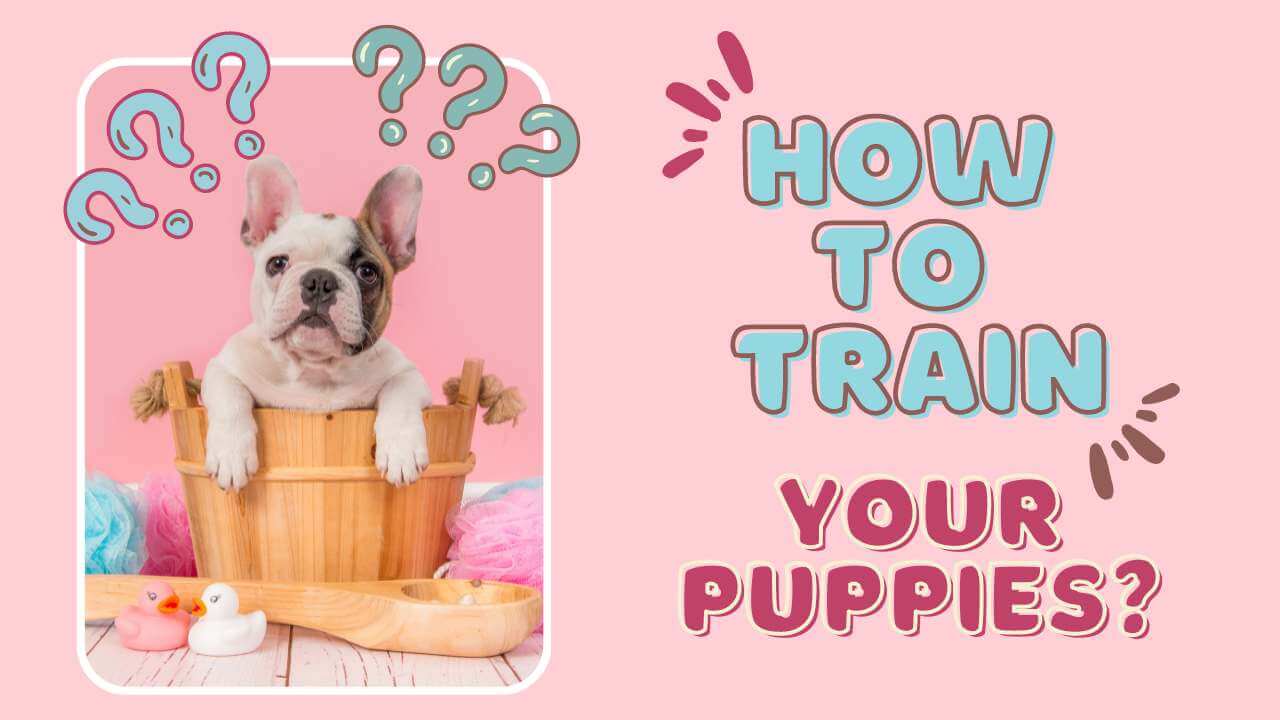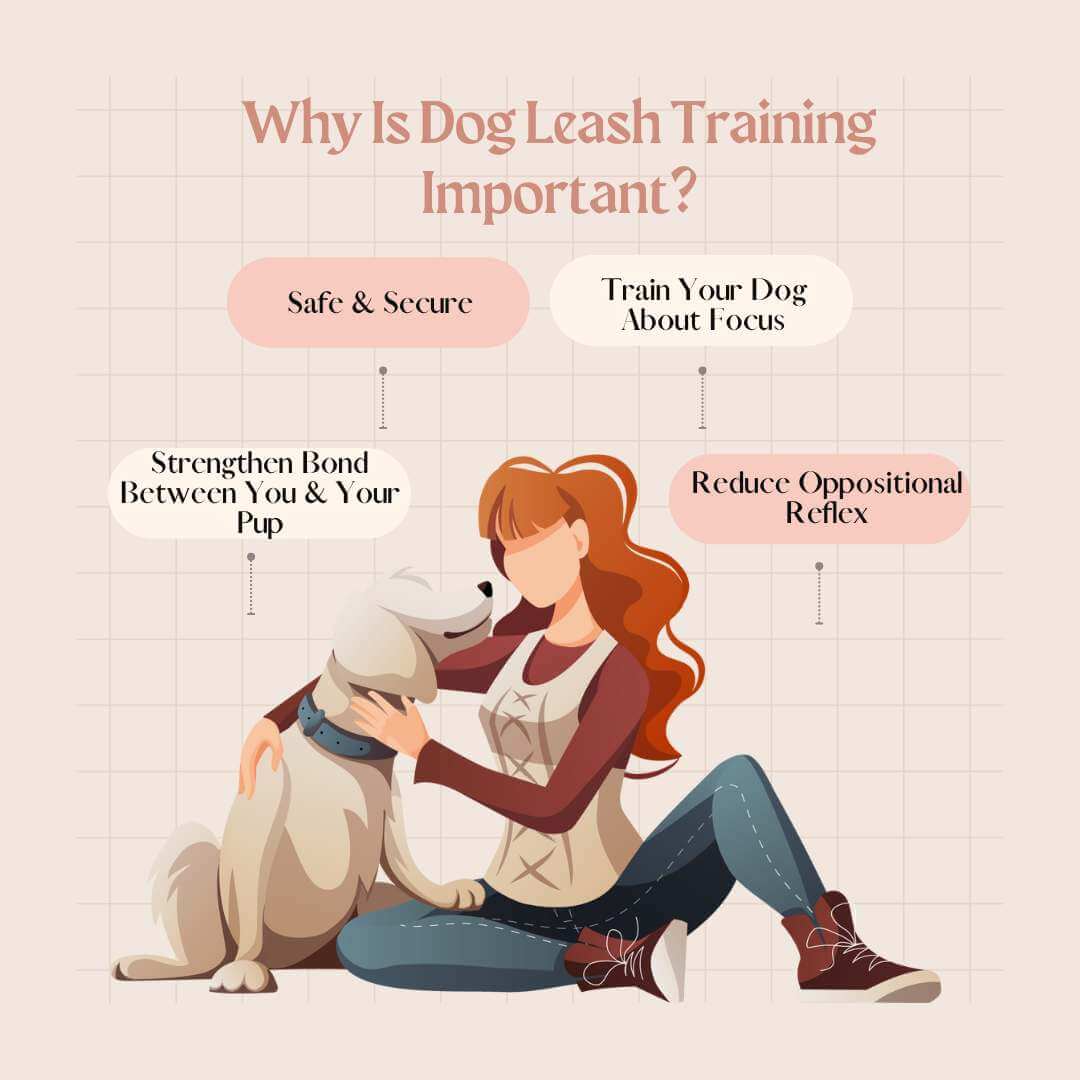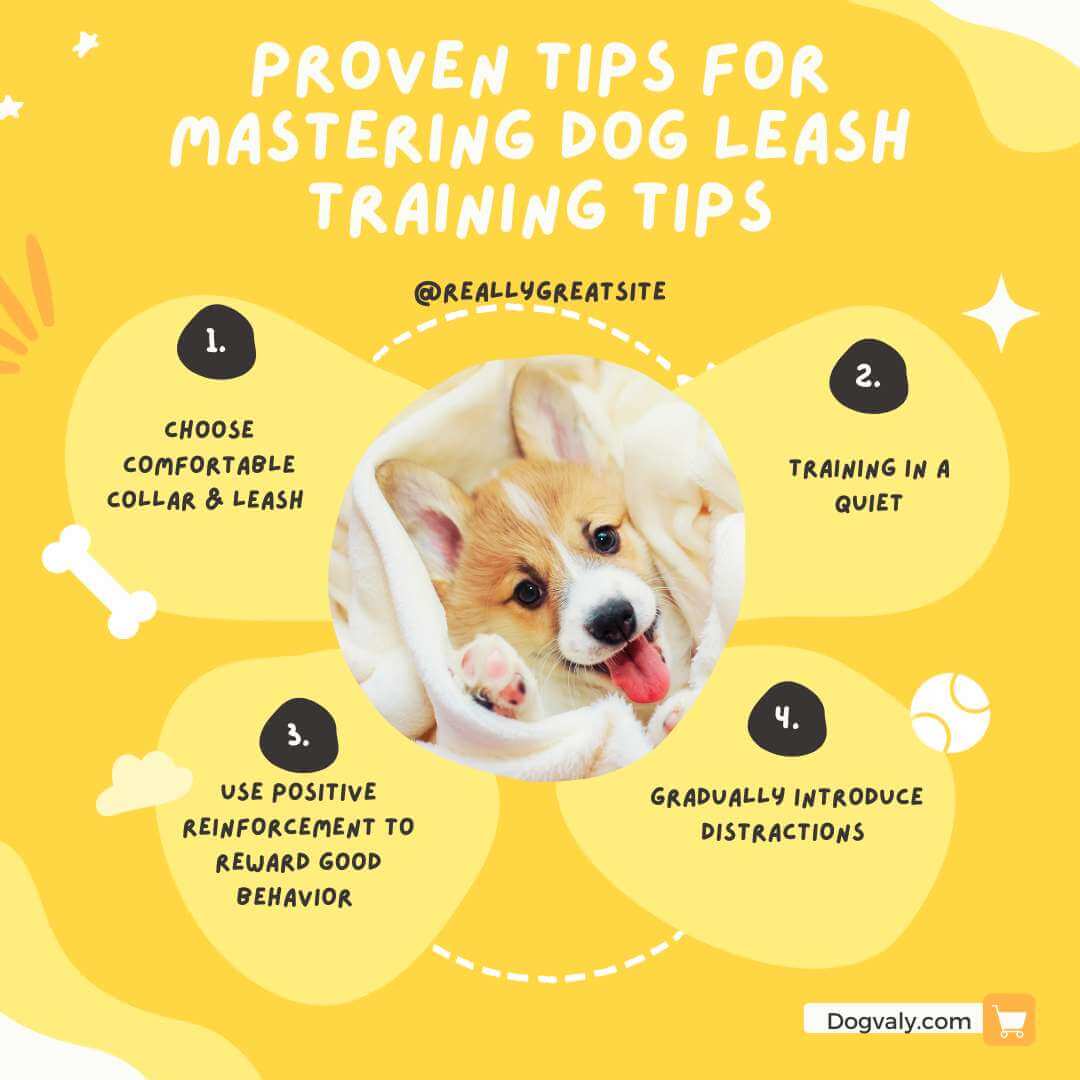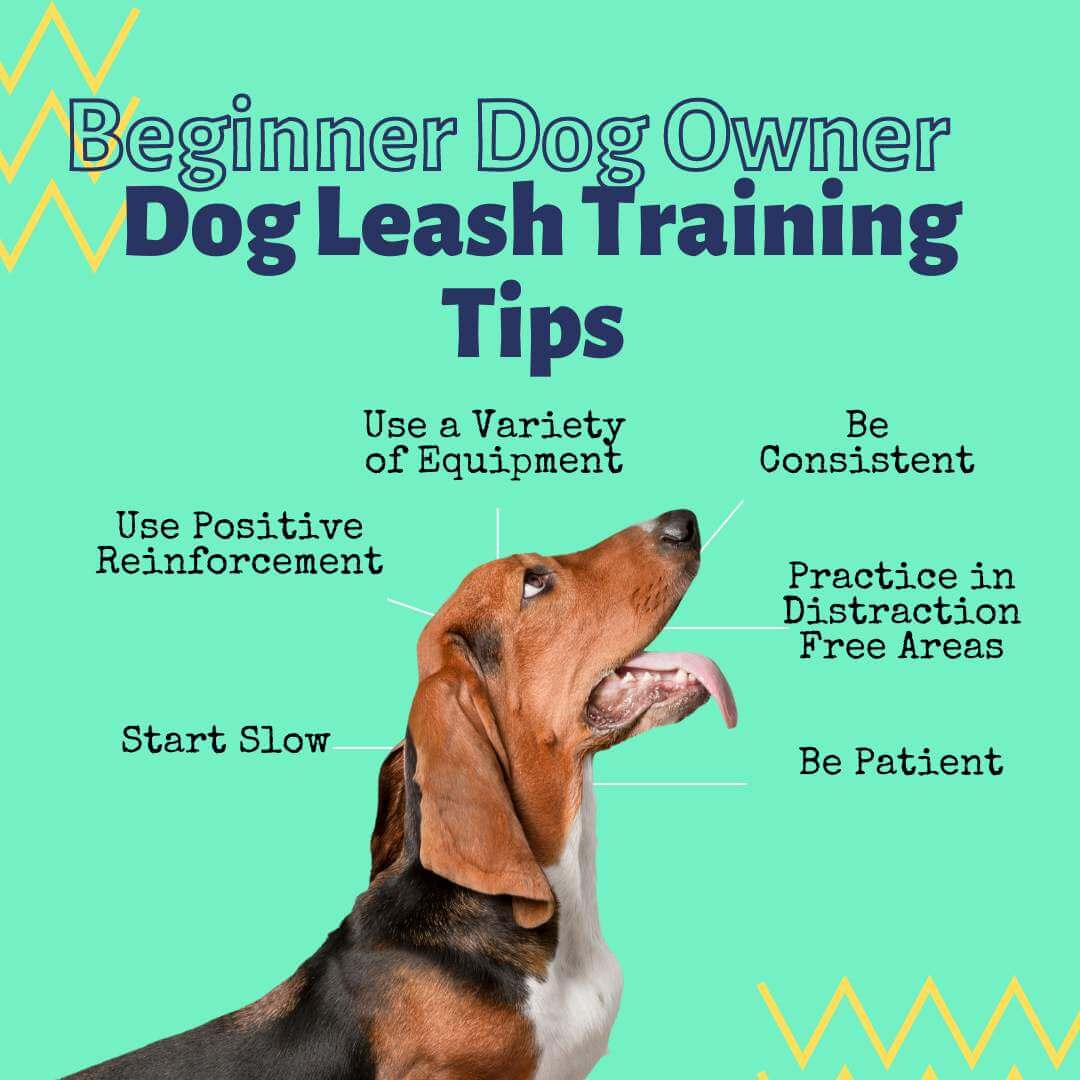7 Proven Tips to Mastering Dog Leash Training Tips!
Do you struggle to get your pup to stay next to you on a leash? Does your dog have difficulty following the simplest commands? Do you need Dog Leash Training Tips?
Having a well-trained pup is one of life’s greatest joys. But for our beloved dogs to enjoy activities with us in public, they must first be properly trained to follow basic commands and stay close when on a leash.
Leash training can be difficult and tiresome, but it’s important for your and your dog’s safety. Training should begin once puppies start walking and will consist of teaching them the appropriate behaviors when out in public

Why Dog Leash Training Is Important !?
The truth is all dogs need leash training. This helps them to improve obedience and is essential for any dog who will be taken out into public places. Without proper training, a pet could wander off or be exposed to potential danger. Leash training also provides positive reinforcement so that your pup can continue learning even after being away from their crate or living space. Many reasons need to be considered when training your dog to use a leash.
It helps to keep your pup safe and secure when out in public and teaches them good manners and acceptable behaviour. Leash training also allows you to take your pup on more adventures, such as hikes or trips to the park.
Leash training can also help to strengthen the bond between you and your pup, as it requires trust and communication. Finally, leash training can help to prevent your pup from running away or getting into trouble when out in public.
Despite the fact that leash training can be challenging, it is worth the effort. Your pup can be trained to stay close and obey commands when on a leash with patience and consistency. Remember to use positive reinforcement and reward your pup for good behaviour. Make sure your pup behaves well anywhere with these tips.

It is important to remember that leash training should start as soon as your pup is able to walk. Start in a quiet, distraction-free area and gradually introduce more distractions as your pup progresses. Positive reinforcement will reward good behavior if you are consistent.
The importance of leash training is often overlooked. When out in public, your pup will behave better with patience and consistency.
You should be patient and consistent when leash training your pup. As your puppy progresses, gradually introduce more distractions. In order to encourage good behavior, positive reinforcement should be used. Make sure to keep your pup close by gently tugging the leash when necessary. Finally, reward your pup with treats or playtime when they have completed a task. Using these tips will ensure that your pup behaves well in all situations.
Dog Leash Training Tips
Dog leash training is important in teaching your dog good manners and acceptable behavior in public. There are several steps to successful leash training, including:

Following these tips can help you train your pup to stay close and obey commands when out on a leash. Using these tips, you will be able to ensure that your dog behaves well wherever he or she goes.
When should puppy leash training start & What age is it too late in training leash a dog?
Puppy leash training should start as soon as your pup is able to walk. This will help them to become accustomed to the leash and learn how to respond to commands. It is always early enough to train a dog; however, it may take longer for an older dog to learn the commands and behaviors associated with leash training. Older dogs may also require more patience and consistency in order for them to learn the commands.
It is important to remember that leash training should be done in a safe and distraction-free environment. Start by introducing your pup to the leash and teaching them basic commands such as “sit,” “stay,” and “come.” Gradually introduce more distractions as your pup progresses. Positive reinforcement will reward good behavior if you are consistent. Make sure to keep your pup close by gently tugging the leash when necessary. Finally, reward your pup with treats or playtime when they have completed a task. Using these tips will ensure that your pup behaves well in all situations.
For Extra Information:-
How long is a leash good for training a dog?
The length of the leash you use for training your pup will depend on the size and age of your pup and the environment in which you are training. Generally speaking, a 6-foot leash is recommended for most puppies. This allows them to explore their surroundings while still being under your control. However, if you are in an open area with few distractions, a longer leash (up to 100 ft/200 ft) can be beneficial for leash training, as it allows your pup to explore further distances while still being under your control. It is important to remember that long leashes should only be used in safe and distraction-free areas. Additionally, it is important to use positive reinforcement and reward your pup for good behavior when using a long leash.
How to properly use a long leash for dog training?
A general leash is an essential tool for all dog owners and trainers. According to the American Veterinary Medical Association (AVMA), “Using a leash during training can help keep both the owner/handler and pet safe and can facilitate teaching the appropriate pet behavior when interacting with people and other animals.” A longer leash is also beneficial in some instances because it allows dogs to explore their environment while still being monitored by an owner or a trainer.
If you are new to using long leashes, keep these tips in mind – they will help you make sure that you get the most out of this training technique! Let’s discuss how properly using a long leash can benefit dog training-
It is also important to remember that long leashes should only be used in safe and distraction-free areas. Additionally, it is important to use positive reinforcement and reward your pup for good behavior when using a long leash. This will help ensure that your puppy understands the commands you are giving them and will make sure that they stay focused on their training. Finally, always keep an eye on your pup while on the leash to ensure they are safe and secure.
Is long dog leash (100 ft/200 ft) good for training?
Long dog leashes (100 ft/200 ft) can be beneficial for leash training, as they allow your pup to explore further distances while still under your control. However, it is important to remember that long leashes should only be used in safe and distraction-free areas. It is also important to keep an eye on your pup at all times when using a long leash, as they can easily get tangled or caught on something. Additionally, it is important to use positive reinforcement and reward your pup for good behavior when using a long leash.
When using a long leash, it is important to keep your pup close by gently tugging the leash when necessary. Additionally, being patient and consistent when leash training your pup would be best. As your puppy progresses, gradually introduce more distractions. In order to encourage good behavior, positive reinforcement should be used. Make sure to reward your pup with treats or playtime when they have completed a task. Finally, these tips will ensure that your pup behaves well in all situations.
What are the basic commands for dog leash training?
The basic commands for dog leash training sit, stay, come, heel, and down. These commands will help you control your pup’s behavior while on the leash. It is important to start with basic commands and then gradually move on to more complex ones as your puppy progresses in their training. Additionally, it is important to use positive reinforcement when teaching these commands. This means rewarding your pup with treats or playtime when they have completed a task. Finally, being consistent and patient when leash training your pup is important. This will help ensure that your pup understands the commands you are giving them and will make sure that they stay focused on their training.
Besides, there is some equipment used for dog leash training. They are-
Easy leash training tips for the dog, beginner dog owner?
Training a new puppy can sometimes seem overwhelming. Knowing where to start can be challenging with so many techniques and philosophies. Leash training is an important part of being a pet owner and one of the most crucial aspects of training any pup.
If you’re beginning your journey with a four-legged friend, it is essential to learn how to leash-train them properly. Here are some easy tips that will help you and your pup effectively and efficiently with leash training.

What to do, what not to do in leash training?
Leash training can be confusing for pet owners, especially if you are new to the process. While some aspects remain constant, there is no one size fits all solution, and engaging in activities that could be counterproductive instead of productive is also a possibility. With so many different techniques available, understanding what works and what doesn’t can take time and practice. Here’s what you need to know about leash training for dogs-
| what to do | what not to do |
| Start slow | Rush the process |
| Use positive reinforcement | Use negative reinforcement |
| Be consistent | Be inconsistent |
| Use a variety of equipment | Stick with one type of equipment |
| Practice in distraction-free areas | Practice in distracting environments |
| Be patient | Give up easily |
Dogs with loose leashes: how do they do it?
Having a dog can bring joy to anyone’s life, but dealing with excessive barking, jumping up, or pulling on the leash is also part of having a pet. Dogs have an instinctive urge to explore the outside world, and this habit generally comes naturally. The problem arises when they must be taught how to walk properly on leashes, so their owners don’t get dragged around everywhere.
When done correctly, training your dog to walk on a loose leash is easy. With patience and consistency, you can show your furry buddy how to stay by your side during any activity outdoors. Here are some of the best tips which can help you and your pup-
By following these tips, you can easily train your pup to walk on a loose leash and enjoy outdoor activities with them without any hassle
FAQ:-
Why do dogs pull so hard on leashes?
Dogs pull on leashes to get their owners’ attention and to retrieve something they believe is theirs. Some dogs pulling may be needed for protection or working in team sports, but all dogs should be allowed to let go when they are no longer needed. When training a dog, it is important to make sure you understand why he pulls and how to train him best so that he pulls less.
Can you leash-train an older dog?
Yes, you can leash-train an older dog. Older dogs are more likely to be independent and may not be as prone to get lost as newer dogs. You will need to make sure that your dog is comfortable with being leashed, though.
How to properly use a shock collar for dog training?
Shock collars should only be used when necessary to keep your dog in line and under control. Please do not use them as a regular punishment or training tool.
Conclusion:
Dog leash training tips are important for any dog owner. With the proper techniques, you can ensure your furry friend is safely escorted around the house and never left alone. Likewise, if you have any further questions, please don’t hesitate to contact a local dog trainer.


